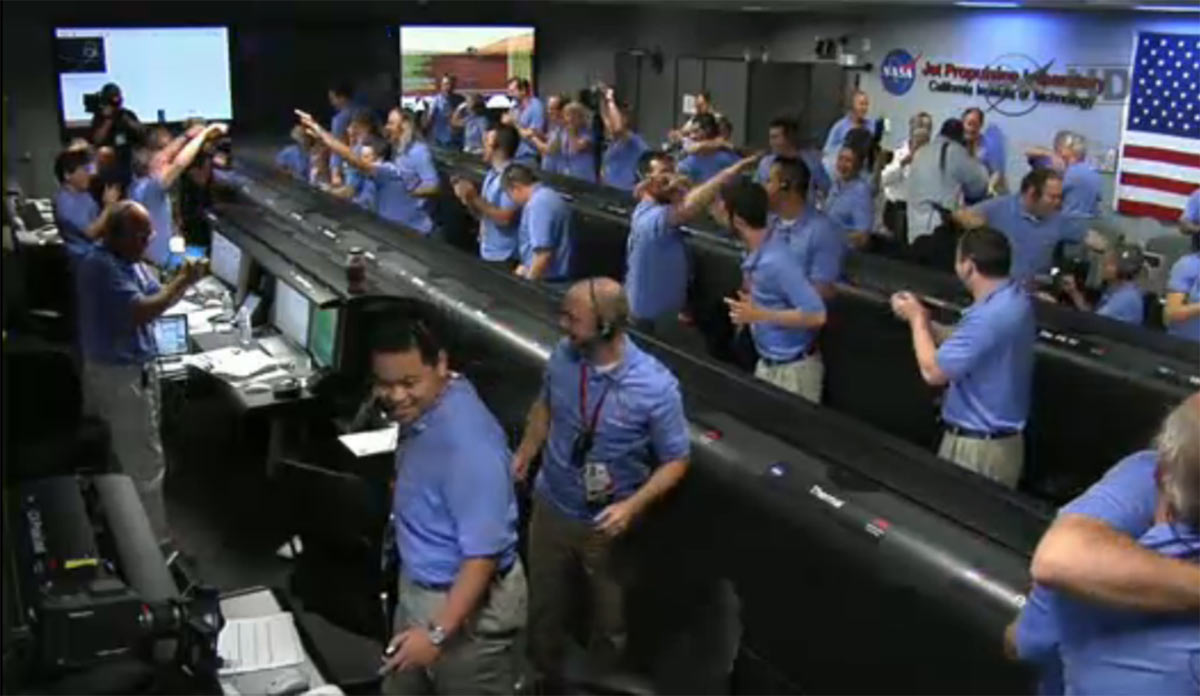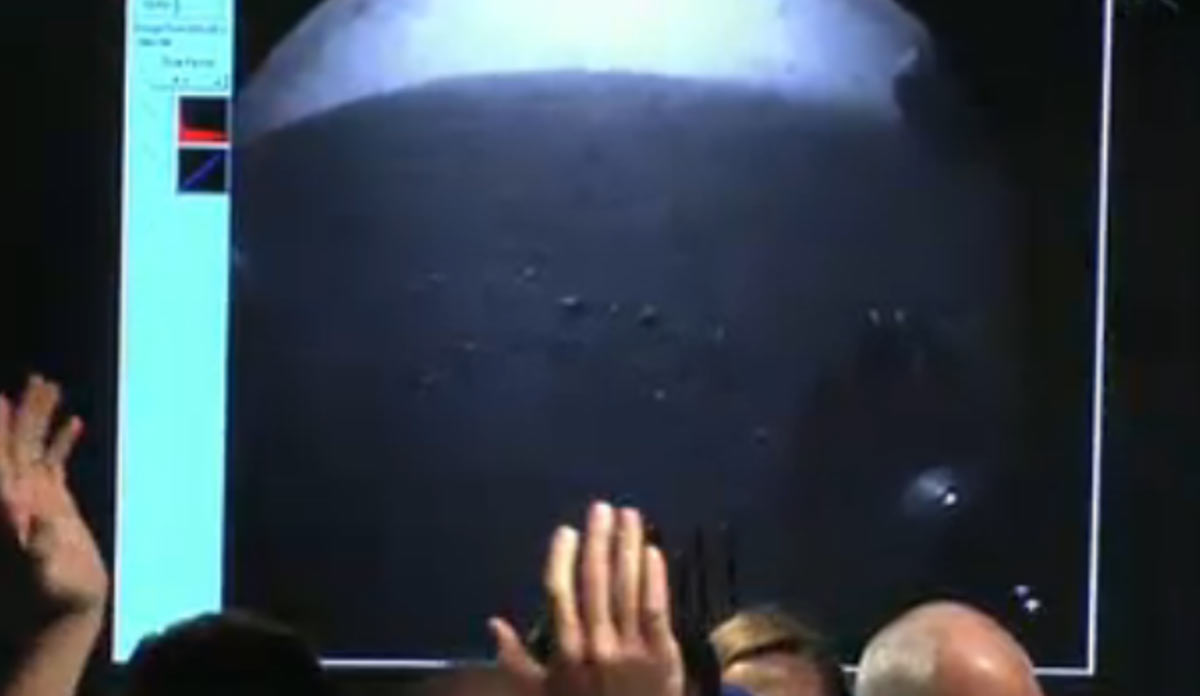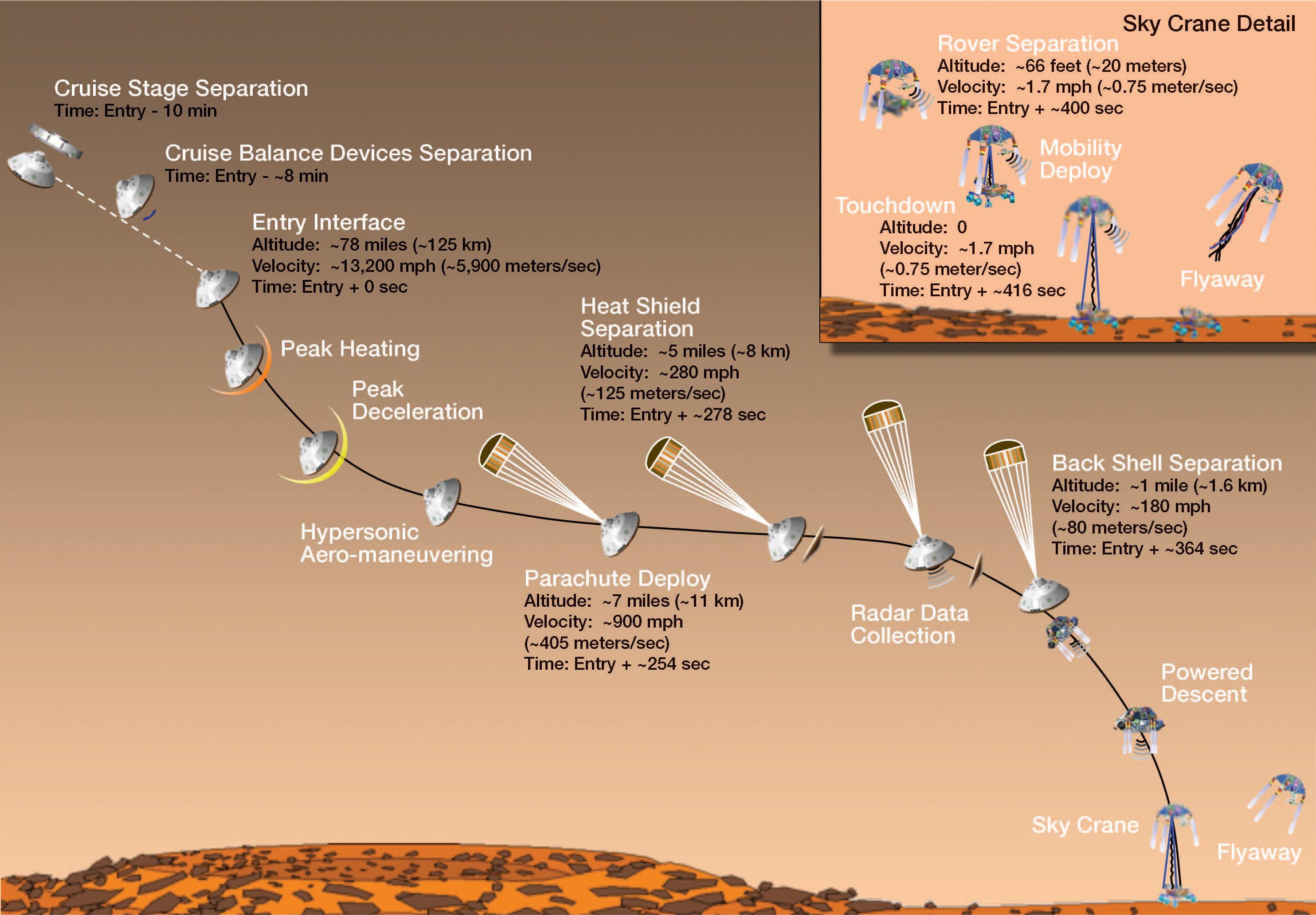Curiosity Lands on Mars, Sends First Picture in Minutes
In a much anticipated event, the most advanced Mars rover touched down on the red planet's surface on Sunday at 10:32 PM PST, one minute behind schedule and only 2.27 miles from the targeted location inside the Gale Crater. It was a landing of stunning precision, given the fact that the signal sent by the equipment takes 14 minutes to reach Earth, which means that, by the time NASA and the member of the Jet Propulsion Lab received confirmation of the beginning of the seven-minute landing process, Curiosity had successfully landed seven minutes before that and began sending data and first images, which reached NASA at 10:34 PM PST.
In a live feed shown on NASA's page, people around the world followed the landing and it appeared to be taking place exactly as planned.
"The Seven Minutes of Terror has turned into the Seven Minutes of Triumph," said NASA Associate Administrator for Science John Grunsfeld in a prepared statement. "My immense joy in the success of this mission is matched only by overwhelming pride I feel for the women and men of the mission's team."
In fact, it was a much needed success for cash-strapped NASA, which is celebrating an immense success and gain in prestige. President Barack Obama previously set the goal for humans to be sent to Mars by 2030 and much more advanced landing of Curiosity, which included several phases of descent and slowdowns of the capsule and its car-sized rover, lend confidence that this goal is realistic and achievable.
At this time, NASA is evaluating Curiosity's instruments and is analyzing the landing site. There are ten instruments on board that have 15 times the mass of the instruments of the payload previously carried by the now immobile Mars rovers Spirit and Opportunity, which landed on January 4 and January 25, 2004. Curiosity is about twice as long and five times as massive as the Spirit and Opportunity Mars exploration rovers. It weighs 1,982 lbs and is 9.8 ft in length. It can pass obstacles up to 30 inches in height and will travel at an anticipated average speed of 98 ft per hour.
Its power is derived from a radioisotope thermoelectric generator (RTG), similar to the one used by the Viking 1 and Viking 2 Mars landers in 1976. The power output is 125 watts of electrical power extracted from about 2000 watts of thermal power, which will gradually decrease as the plutonium-238 decays over time. Scientists estimate that there will be about 100 watts of electrical power left in about 14 years. Curiosity can generate about 2.5 kWh per day, in comparison to only 0.6 kWh the smaller Spirit and Opportunity had available.
Contact Us for News Tips, Corrections and Feedback
Get Tom's Hardware's best news and in-depth reviews, straight to your inbox.

Wolfgang Gruener is an experienced professional in digital strategy and content, specializing in web strategy, content architecture, user experience, and applying AI in content operations within the insurtech industry. His previous roles include Director, Digital Strategy and Content Experience at American Eagle, Managing Editor at TG Daily, and contributing to publications like Tom's Guide and Tom's Hardware.
-
freggo So NASA is not 4 4 4 :-)Reply
4 for 4 rover landings going from a shoebox size to a VW Beatle.
Can't wait to see what they will dig up with this one; and of course what size #5 will be.
Congrats to the team !
-
bunkgoats A triumph of science, technology, engineering and mathematics! Congrats to everyone at NASA!Reply -
igot1forya True professionals! Sad to see funding cut for these guys, but they seem to make the most of the slim pickings with these amazing feats of engineering! The live feed was a nail-biter - I sure hope this generation can find inspiration from this and pick up an interest in the future of space flight.Reply -
killerclick I was watching it live on NASA's website, and was surprised by all the Macbooks they use in mission control.Reply
Still, it was great, even if it's been 43 years after the Moon landing. -
dalethepcman I'm surprised this article wasn't titled "NASA successfully sends nuclear reactor to mars" considering the flamboyant title of your last article. At least this one has some truth to it.Reply
On Topic . The first picture is every NASA employee celebrating. All 12 of them. :) -
killerclick igot1forya Sad to see funding cut for these guys, but they seem to make the most of the slim pickings with these amazing feats of engineering!Reply
I wouldn't call $2.5B slim pickings, but I'd love to see a mission like this done every month. If Boeing and Lockheed Martin need to be fed, it's better that they make space stuff than weapons.
-
dragonsqrrl sp0ngerHope this one lasts just as long as oppertunity!Unfortunately, it won't. The MSL's radioactive power source will last for 2 years before it expires. While it will provide more operational hours during those first 2 years than the previous solar powered rovers, it'll ultimately be incapable of achieving the same operational lifespan.Reply


